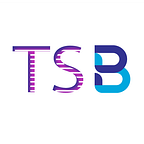Blockchain applications in Dairy Industry (Part 28)
Welcome to the 28th part of the 100 part series on Blockchain.
Cases of contamination and dilution of milk are on the rise. Nowadays, consumers are even ready to pay a premium for genuine quality milk. There are certain questions that bother every customer while buying a packet or a can of milk. What is the source of the milk? Is the milk genuine cow milk, as mentioned on the packet? Whether the milk is from a healthy cow and is the milk fit for consumption, as in many cases, milk gets spoilt during its transportation due to a lack of favorable environmental conditions.
Blockchain-The solution
Blockchain has the potential to provide consumers with a solution through which they will be able to trace the whole journey of the milk from the farm to their mouth. Multiple stakeholders are involved in supplying the milk from the farm to the retail shop from where we buy our milk. All of these stakeholders need to register each and every piece of information about the milk throughout its journey on the Blockchain to bring transparency in the supply chain. Since storing the entire data on Blockchain is very costly; thus, distributed off-chain file storage IPFS is used to store supply chain transactions data. A unique hash is generated for every uploaded file on the IPFS server, which is then stored on the smart contract along with its address, which the permissioned stakeholders can access. In other words, anyone knowing the hash of the file can retrieve the file from IPFS and read its data. Any change in the uploaded file would change its hash.
- Starting from farmers, they will be registered on the Blockchain, and a unique ID will be assigned to each of them. They will be required to tag their cows using an electronic tag or RFID tag. A tamper-proof RFID tag is attached to the ear of cows so that each cow becomes uniquely identifiable, and RFID readers can identify each animal via its RFID tag. The unique RFID tag number of each cow needs to be registered on the Blockchain along with its owner.
The information about a cow’s health, vaccinations she received, her feed, etc., needs to be recorded on the IPFS along with their relevant proofs, whose hash will be stored on the smart contracts. Farmers will also be required to register other related information on the IPFS and Blockchain, like how the cows are raised, are they allowed to graze in the fields, etc. The recorded data on IPFS along with their hashes on Blockchain will provide a secure and tamper-proof trail of each animal’s history.
2. The next piece of information to be captured on the Blockchain will be during the milking phase. The milking process can be automatic or manual, which will be recorded on Blockchain along with the yield of milk from each cow. Then this milk is sold by the farmer to a milk processing company. Before buying milk from the farmer, these processing companies run a quality test on the milk, and once approved, the payments are released to these farmers after a few days.
With the implementation of Blockchain and smart contracts, the payment cycle can be shortened for these farmers. Once the quality of the milk is approved, the farmer will be notified about the acceptance of the milk, and a smart contract will be executed that will release an automatic payment, thus shortening the payment cycle for him. And in case the milk does not pass the quality tests, the farmer will be audited for quality compliance.
3. Since milk is a perishable product that needs to be kept at a lower temperature, it becomes crucial to maintain and monitor a low-temperature range during its transportation. To monitor the temperature of the milk during its transportation, IoT temperature sensors are installed that will record its temperature throughout the journey. And in case of any temperature fluctuation, the information will be recorded on the IPFS and smart contracts. Additionally, an alert will be sent to all the permissioned stakeholders on the network.
4. On receiving the milk supply, the processing company will process and pack the milk in bottles or packets. This whole processing information will then be recorded on the Blockchain. Each milk bottle or packet will be given a unique identification number, i.e., a QR code.
Then the milk is shipped to supermarkets. During this phase as well, the storage and transportation temperature needs to be recorded on the Blockchain. And once the milk reaches the shelves of a retailer, the retailer is required to keep the milk at the required conditions.
Before buying, the consumer can scan the unique ID on the milk bottle or packet by his smartphone and can trace the complete journey of the milk. This information will help him to authenticate and decide if the milk is fit for consumption. Similarly, other dairy products like butter and cheese can be verified by scanning the unique IDs present on their label covers.
This transparency in the supply chain will strengthen the trust between companies and their consumers.
If you liked this article and want to know more about Blockchain, NFTs, Metaverse, and their applications, click the below link.
Happy learning!
Other related articles
Happy Blockchain Learning!
